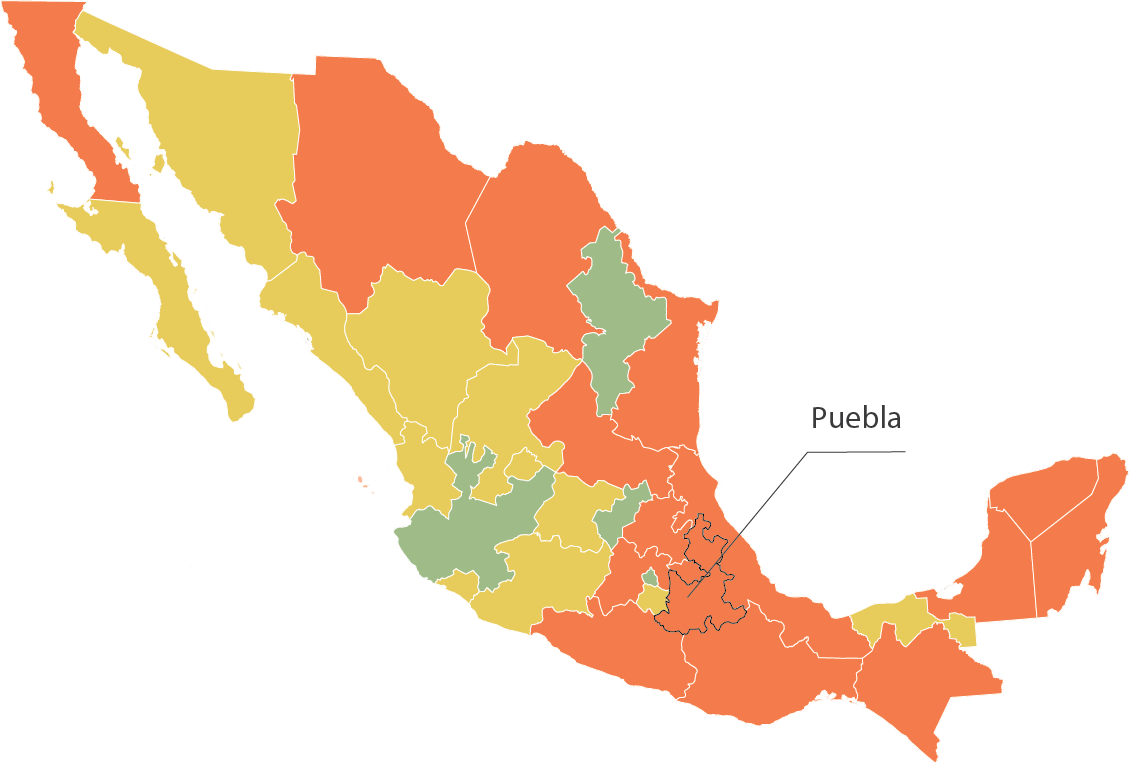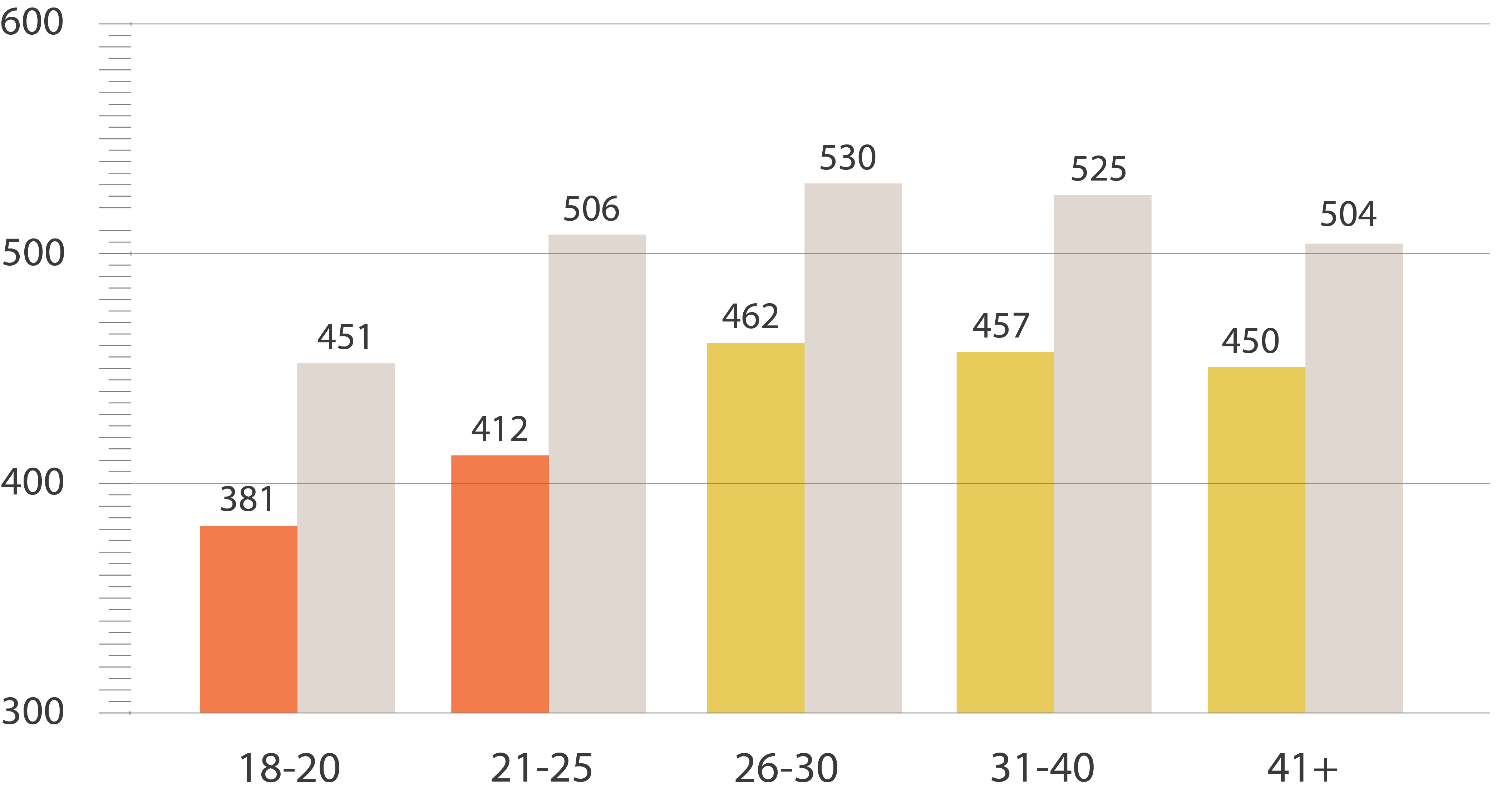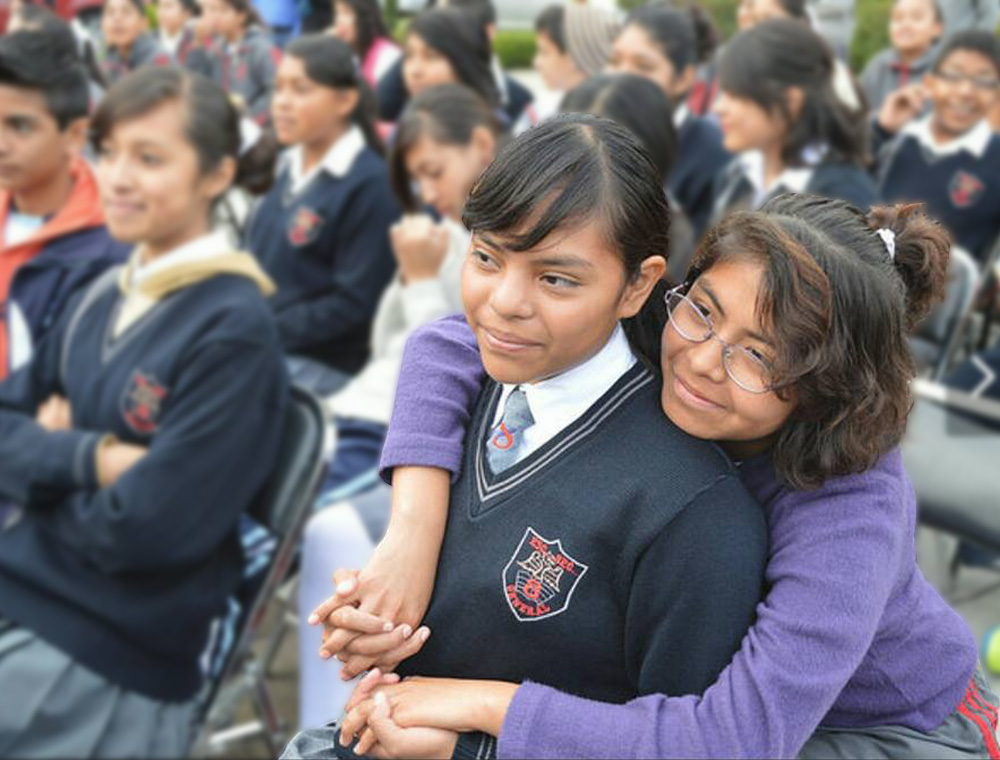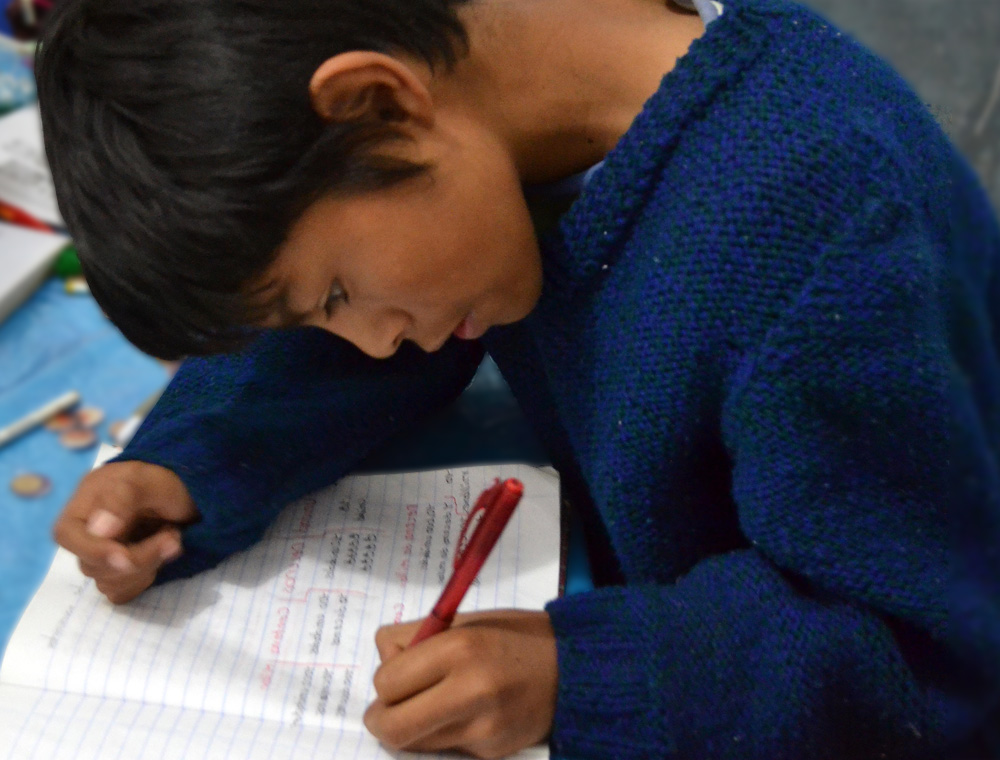


We work on educational projects for the most vulnerable. We provide well-trained educators, safe facilities, and appropriate vocational training. We strive for equal opportunities for men and women in need, without any discrimination. We currently have one ongoing project, the EduCar mobile classroom.

English proficiency in Latin America
Very High High Low Very LowThe background

English proficiency in México
Very High High Low Very LowEnglish proficiency
The 2022 edition of the EF English Proficiency Index ranks 111 countries and regions according to their English proficiency. Results show that Mexico has decreased since 2020 to a very low proficiency level and is currently ranked 19th out of 20 countries in Latin America and 88th out of 111 countries in the world. Despite English being the international business language in Mexico, 5-15% of the 130 million inhabitants speak or understand the language, where access to classes remains uneven. Only 10% of primary schools and 20% of secondary schools offer English classes despite their legal obligation. In 2015 the educational organization Mexicanos Primero prepared the first English Usage and Comprehension Test and applied it to 4,727 secondary school graduates from 11 Mexican cities. Results showed that only 3% obtained the CEFR level B1 expected by the Ministry of Public Education, while 79% were categorized in the non-existent level A0. Of the students with an A0 level, a staggering 53% graduated with a score of 9 out of 10. In the case of English teachers, 39% did not even have the expected B1 level. The city with the lowest rate of English Proficiency was Puebla, Mexico’s 4th largest city. There is therefore a driving demand, with a strong recognition that English language training is key to both domestic and global growth.The background
The 2022 edition of the EF English Proficiency Index ranks 111 countries and regions according to their English proficiency. Results show that Mexico has decreased since 2020 to a very low proficiency level and is currently ranked 19th out of 20 countries in Latin America and 88th out of 111 countries in the world. Despite English being the international business language in Mexico, 5-15% of the 130 million inhabitants speak or understand the language, where access to classes remains uneven. Only 10% of primary schools and 20% of secondary schools offer English classes despite their legal obligation. In 2015 the educational organization Mexicanos Primero prepared the first English Usage and Comprehension Test and applied it to 4,727 secondary school graduates from 11 Mexican cities. Results showed that only 3% obtained the CEFR level B1 expected by the Ministry of Public Education, while 79% were categorized in the non-existent level A0. Of the students with an A0 level, a staggering 53% graduated with a score of 9 out of 10. In the case of English teachers, 39% did not even have the expected B1 level. The city with the lowest rate of English Proficiency was Puebla, Mexico’s 4th largest city. There is therefore a driving demand, with a strong recognition that English language training is key to both domestic and global growth.
English proficiency in México
Very High High Low Very LowThe solution
In today’s society, it is taken for granted that everyone can get around on a daily basis, for example, by car or bus. However, there is a group of people who, for various reasons, lack the ability to commute and, as a result, are less able to participate in social life. The EduCar project aims to make quality education accessible for transport deprived people. With a mobile classroom, quality English education will be provided to youth in disadvantaged areas to ensure them better economic and social opportunities. The mobile classroom will have a regular route, stopping in 3 different sites in a set rotation every week. Classes will have a duration of 120 minutes and will be held in small groups of 10-15 students. The aim is to improve the English level from beginners level A0 to elementary level A2, over a period of 19 months. Instructors are recruited from universities, language schools or embassies and require the minimum level B2 to teach.Driving education

Concept of the EduCar mobile classroom
The solution
In today’s society, it is taken for granted that everyone can get around on a daily basis, for example, by car or bus. However, there is a group of people who, for various reasons, lack the ability to commute and, as a result, are less able to participate in social life. The EduCar project aims to make quality education accessible for transport deprived people. With a mobile classroom, quality English education will be provided to youth in disadvantaged areas to ensure them better economic and social opportunities. The mobile classroom will have a regular route, stopping in 3 different sites in a set rotation every week. Classes will have a duration of 120 minutes and will be held in small groups of 10-15 students. The aim is to improve the English level from beginners level A0 to elementary level A2, over a period of 19 months. Instructors are recruited from universities, language schools or embassies and require the minimum level B2 to teach.
Concept of the EduCar mobile classroom
The beneficiaries
Underserved groups
Beneficiaries of the EduCar project are 3 groups, between the ages 10-30, who live in marginalized communities of Puebla and want to engage in learning the English language for better economic and social opportunities. Within this age range, the project will take in account minimum 50% of women, excluding discrimination based on sexual orientation, ethnicity, gender identity or disabilities.The beneficiaries
Beneficiaries of the EduCar project are 3 groups, between the ages 10-30, who live in marginalized communities of Puebla and want to engage in learning the English language for better economic and social opportunities. Within this age range, the project will take in account minimum 50% of women, excluding discrimination based on sexual orientation, ethnicity, gender identity or disabilities.
English proficiency scores by gender

English proficiency scores by age groups
Low Very Low World
English proficiency scores by gender

English proficiency scores by age groups
Low Very Low WorldMarket vendors
The first beneficiary are vendors from the El Alto food market in Puebla. Located in the city's oldest district, this popular attraction employs about 103 people, of whom 80% are indigenous women. By teaching English language skills, we want to help market vendors to communicate effectively with tourists.
Schoolchildren
The second beneficiary are children of the Águilas de Anáhuac high school in San Pedro Cholula in Puebla. The public school has about 516 students ages 12 to 15. By teaching English language skills, we want to prepare schoolchildren for a future beyond secondary education.
Vulnerable youth
The third beneficiary are children and young adults from the Kali community centers in Puebla, facilitated by BUAP University. By teaching English language skills, we want to improve the living conditions of vulnerable youth in disadvantaged peripheral neighborhoods.